The Surprising Social Side of Online Teaching
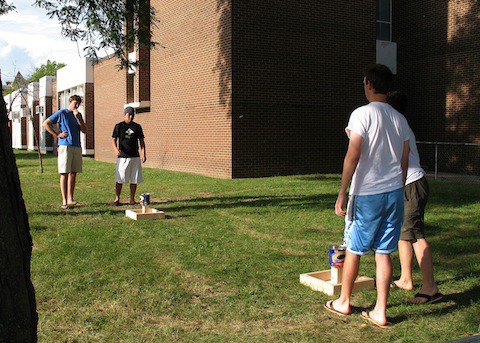
Learning in a K-12 online environment can be a socially isolating experience. It can also be a socially liberating opportunity for many young learners. The difference depends on how any given online school bridges the transactional distance naturally created by distance-based learning. In other words, making a conscious effort to build community amongst online students and teachers has the ability to positively influence all community members’ experiences online to accommodate their computer-based educational needs as well.
But what is it about socialization that matters so much to learning online or in the traditional classroom? Well, it’s not simply about amassing a real life friend’s list. Socialization is the process by which we learn how to interact, build, and maintain relationships with others around us. It even teaches us the beliefs and expectations necessary to adopt in order to become successful contributing members of society. But perhaps most importantly, schools should serve as agents of socialization to help children develop cognitively.
That’s exactly what I was trying to do during the game of Norwegian Horseshoes that I was playing with a few of my students at our school-wide campout last weekend. Of course, I wasn’t consciously concerned with their abilities to engage in appropriate conversations or build up a surplus in a friend’s emotional bank account. I was focused on getting that dang washer into the 3-point hole to win the game. But the way that I responded when I lost to a twelve-year old girl–by congratulating her with a high-five–served as an opportunity for that student to observe my behavior and internalize it herself to guide her future decision making and performance. I try to model appropriate social behavior like that for all of my students when we interact online or off, which happens to be more often than you might think.
Though my students are spread out across the southeastern corner of Idaho, the public online K-12 school that I work for makes possible as many opportunities to log off of our computers and spend time together as we can. It’s optional, certainly. But the amount of socialization that our group of online students and teachers do is certainly counterintuitive to the notion of computer-facilitated homeschooling.
In fact, since we do not need to worry about the financial costs of renting a bus or the liability insurance that comes with taking students off of school property, my students and I are able to do the things that I only dreamt of doing when I was a traditional elementary school teacher. In the next few months alone, our staff and student body will be getting together to go to a university planetarium, harvest pumpkins at a locally-grown pumpkin patch, build LEGO Mindstorm robots, create oil pastel masterpieces, bare the tundra-like elements of an Idaho winter to experience ice fishing, have a Halloween-themed costume party, a school-wide Thanksgiving dinner, and a family-oriented Christmas celebration. Then comes the new year, which is already scheduled full of social outings and school gatherings.
In addition to the efforts that my school’s administration and staff make to create networking opportunities for students in face-to-face settings, the reality of our situation is that not all of our students are able to attend the events that we plan for them. Some live two or more hours away from the city that our school headquarters are located in. Others are pre-professional ballerinas and musicians. And in our part of the state, many of our students are needed to help out on their family’s farm or ranch. That doesn’t mean that we let the geographical distance that separates us keep us from connecting and socializing, however.
One of the specific reasons that I was hired to teach at my district’s online school this year was to develop an online social networking community that our student body and staff could use to contact each other, communicate with classmates, and share our personalities through developing personal profiles and bonding over similar interests and experiences.
So, on the side of our weekly web classroom lessons, my students and I are laying the groundwork for a digital social life on a learning management system called My Big Campus. Before the school year started, I created a self-paced online course introducing middle school students to digital citizenship and online safety. Though each of them is learning about the opportunities and pitfalls of logging on to the Internet, the real lessons that are intended to be learned on My Big Campus are how to connect, communicate, and maintain positive social relationships online that have the potential to extend to our school-wide face-to-face interactions as well.
Currently, I have 35 online middle school students, 33 of whom I have met in person. Like Vygotsky posited, we learn through social interactions with mentors and teachers in our Zones of Proximal Development. But nowhere in his Theory of Cognitive Development did he say anything about having to go to a brick-and-mortar school to successfully do that. Apparently, my students and I are proving just that.

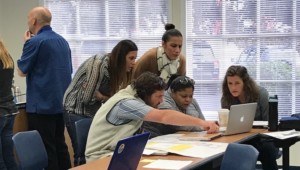
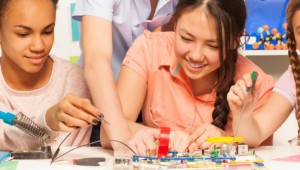
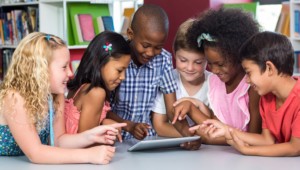
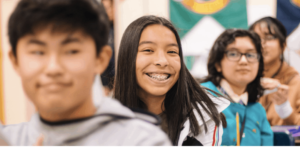
0 Comments
Leave a Comment
Your email address will not be published. All fields are required.